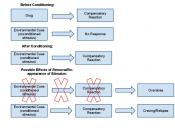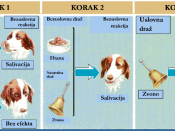Learning is a complex process that not one scientist or group of other educated individuals has been able to accurately define in a one hundred percent universally accepted way. It is known that learning involves the absorption of new information and change in behavior; however, there are many different approaches to describing how, when, and why this process is carried through. Like most concepts dealing with the human mind, learning has been broken down into different types and styles.
While there has not been just one entirely accepted definition of ÃÂlearning,ÃÂ several individuals have made attempts at making the process as clear as possible. The American Heritage Dictionary, according to Hergenhahn and Olson, (2005) defines learning as follows: ÃÂTo gain knowledge, comprehension, or mastery through experiences or study.ÃÂ (p.3) While this definition is straight to the point and simple enough, others have felt the need to expand on the ideas of what is involved in this subject of learning.
This is due, in part, to the fact that people have recently accepted the idea that learning involves changes in observable behavior. Kimble gave another definition that describes learning as ÃÂA relatively permanent change in behavior potentiality that occurs as a result of reinforced practice.ÃÂ (p.3) Kowalski and Westen give yet another definition in the text, Psychology, (2005) which claims that learning refers to ÃÂany enduring change in the way an organism responds based on its experience.ÃÂ (p.157) Behavior is often considered the result of learning because so many definitions conclude that the learning process must be able to be seen in observable behavior.
Hergenhahn and Olson, (2005) explain that there is a process called conditioning which is the process that leads to change in behavior. It involves two separate types, or branches, each representing a type of learning. These two...


